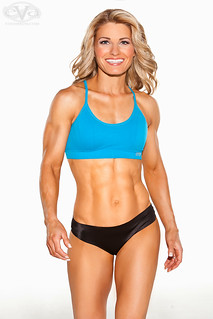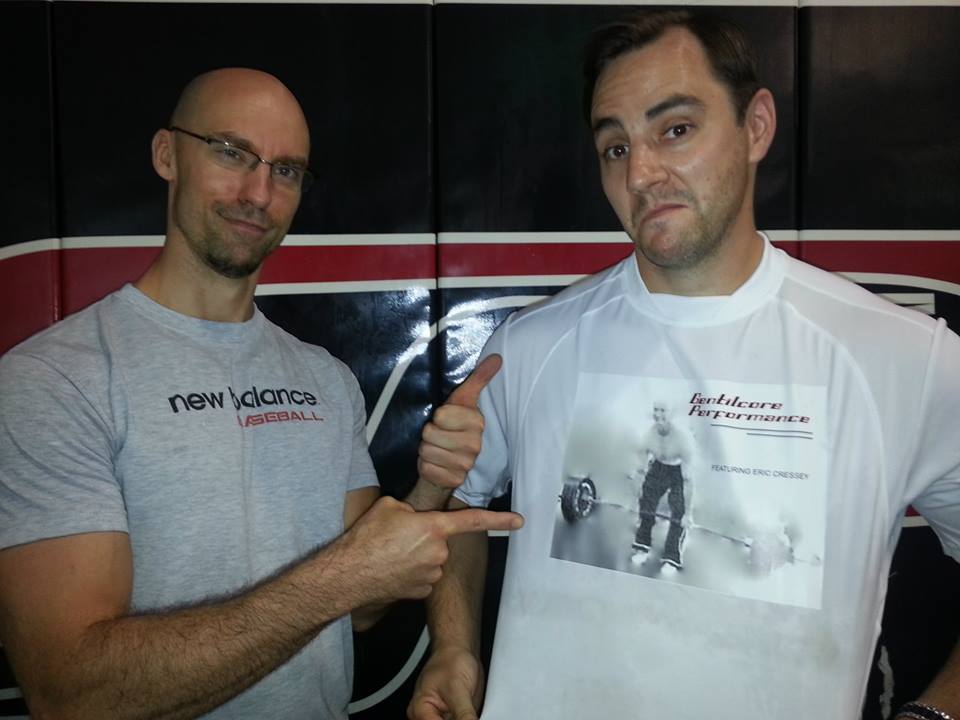I’d say that on any given day I receive close to 50+ emails from people around the world asking various things ranging from programming advice to book recommendations to sharing —-[[[[[[[[[[[[[[[[[[[[[[= (<——oops, my cat just pounced on the keyboard and says hi) their shared affinity for Jason Bourne.
Probably one of the more common “themes” that gets sent my way are emails from guys looking for advice on how to add muscle to their frame or how they can go about adding on any weight in general.
Much of the process entails asking a few key questions like, “what does your current training split look like?” or “how long have you actually been training?”
If someone retorts with something like, “well, on Mondays it’s chest and back, on Tuesdays it’s bis and tris, Wednesdays I hit up some posterior delts and tibialis anterior, and then I’ll maybe toss in some legs for good measure,” I know that it would be in their best interests to point them in the direction of the squat rack or deadlift platform and tell them not to leave until they’ve put on 25 lbs.
And then there are those who’ve only been training for two months and are worried that they don’t look like Mr. Olympia yet.
In this scenario I’ll roll out a generous dose of “expectation management” and inform them that it’s going to take a lot of time, hard work, and CONSISTENCY (for years on end) in order to see the results they’re after.
Much of the time I’ll point them in the direction of sites like T-Nation and tell them to absorb as much as they can – especially stuff written by Chad Waterbury, Joe DeFranco, and Jim Wendler.
And it isn’t just about reading either. One of my biggest pet peeves is when some internet hero brags about how many times he’s read SuperTraining and that he has like 20,000 posts on some forum, yet, can barely crack a 1.5x bodyweight deadlift.
Reading and educating yourself is cool and all, but you also need to practice what you preach. It amazes me how people can quote Zatsiorsky, yet seemingly can’t manage to weigh more than 150 lbs soaking wet. Despite having been “training” for five years
Just shut-up and lift!
And now I’m just getting fired up and angry for no reason. Deep breaths, Tony. Deep breaths
One such email I received a couple days ago went something like this:
I have been working with 2 different online trainers which provided me with my diet and workout plan but unfortunately I did not get visible changes compare to the GREAT amount of work and dedication. I am a really HARDGAINER and I have a small frame with really small legs (chicken legs 🙂 ) Is there something different that you can provide me in your services that could make a difference in my body composition (muscle growth)?
Do you provide any nutritional advice? What supplements would you recommend I take?
My response: CALORIES!

My facetious tone aside, I did write back a more thorough response, I didn’t hold back in letting the guy know that it’s not rocket science. No pill or powder is going to trump lack of calories. You can’t just magically make muscle appear out of thin air. The body needs calories to grow.
But all of this got me thinking: What are some other tidbits of advice I could throw down to other “hardgainers” out there?
Well, here you go:
1. Calories
Seriously, eat! I know, I know, you eat like, all…….the……time. Actually, no, you don’t. My litmus test for most self-described hardgainers is this one simple question:
What did you eat for breakfast this morning?
More often than not I get s bunch of “ums” and “uhs,” with a really long pause mixed in and it just gets awkward. The word “supplement” shouldn’t even be a part of your vocabulary if you’re not even making an effort to eat breakfast.
And I’m not just referring to an apple and a glass of OJ either. You’re a human being not a hummingbird. Be a man, and don’t make the lame excuse that you don’t have time. Get up earlier, and make some eggs. And don’t you dare toss away the yolk!!!!! I can’t back this up with science, but an angel dies every time an egg yolk is throw into the sink.
If eggs aren’t your bag, it takes all of two minutes to make a bowl of oatmeal. I don’t care, just eat breakfast for the love of god.
One of the best weight gaining pieces of advice I give guys is one I stole from Dr. John Berardi. Buy a bag of cinnamon-raisin bagels, slather each one with a boat load of peanut butter, and eat one of those in between each meal.
And if you don’t like cinnamon-raisin bagels, who the hell are you??? It’s like I don’t even know you anymore. Who doesn’t like cinnamon-raisin bagels?!?!
The point is, you need to eat, and you need to eat a lot.
Eat.
2. Less Volume?
Yes, you read that correctly. Less volume. It sounds counterintuitive but I’d make an argument that most hardgainers perform way too much volume and that’s what’s preventing them from packing on any weight.
While admirable, many will spend 2-3 hours in the gym per day, and on the off chance they do take a day off, that “off day” turns into 400 m tempo runs at the local track. Or they do a Tough Mudder just for the fun of it.
Stop it already!
How can you expect to put on any weight if you’re constantly burning off calories?
When I start working with a hardgainer I typically limit his training days to THREE, full-body workouts per week. Depending on the individual I may add in a day (maybe two) of GPP or movement, but for the most part I’m going to significantly reduce their training volume.
It’s a mindf*** at the start, especially for those who are used to heading to the gym everyday to blast their biceps, but it’s uncanny how often they start to see the scale ooch in their favor when they cut out all the extraneous fluff in their workouts.
3. Focus on the Big Rocks
For those who are familiar with the Pareto Principle this next point will hit the nail on the head. For those who are scratching their heads here’s a brief explanation:
It was named after an Italian economist, Vilfredo Pareto, who demonstrated that 80% of the wealth in Italy was owned by only 20% of the population.
Taking it a step further, many have described it as a Law of Unequal Return, whereupon certain activities tend to give more return on investment than others. Incidentally, it should come as no surprise that many (if not all) aspects of fitness, can be applied here.
I know this comes across as preaching to the choir, but it bears repeating: focus on the bang-for-your-training-buck exercises like deadlifts, squats, bench press, chin-ups, rows, push-ups, and single leg work and you’ll see good things happen.
If all these so-called hardgainers spent 80% of their time focusing on the big rocks (and understood that progressive overload is kind of an important thing), they probably wouldn’t call themselves hardgainers anymore.
I’d go so far as to say that if more guys started their workouts with a squat or deadlift variation and just alternated between the two week in and week out for a straight year, they’d see marked improvements in their physique.
Trust me, ditch the arm day and go lift something heavy…..;o)
4. Train Like an Athlete!
I like to play a game with people. When I start with a someone who refers to themselves as a hardgainer I like to ask them to bring in a picture of a physique they admire. Much of the time they’ll bring in a picture of guys like former NFL wide received Terrell Owens.
Now, I can’t speak to Terrell’s training, but can almost guarantee that he didn’t build that physique by crushing tricep kickbacks and worrying about carb cycling.
A lot of guys want to look like athletes, but they don’t come remotely close to training like one. Of course there’s a lot that comes into the picture. We have to take into consideration one’s injury history, experience, and if someone has the movement quality of a Sasquatch I don’t feel sprinting is a wise choice. It ALWAYS comes down to progressions.
That said, I do feel a lot of people train themselves as if they’re covered in bubble wrap and fail to elicit any form of training effect
If you want to look like an athlete, you need to train like one!
Which is why Mike Robertson’s Bulletproof Athlete is an excellent choice for hardgainers as well as those looking to take their training to the next level.

It includes four months of customized programming, and there’s even several options to choose from depending on your schedule. What’s more it comes with an extensive exercise database, as well as weekly conditioning and nutritional challenges.
Sometimes it’s just a matter of getting out of your own way and allowing someone else to do the thinking for you.
The manual is currently on sale NOW for a bargain price of $97. But that ends THIS Saturday (August, 3rd), so if you’re going to take advantage of the savings you need to act quickly. Ya heard.
And that’s that. I know I could keep going and speak to sleep, recovery protocols, 10×3 instead of 3×10, and did I mention deadlifts? But hopefully a few of the points I did hit up resonated with a few people out there.






